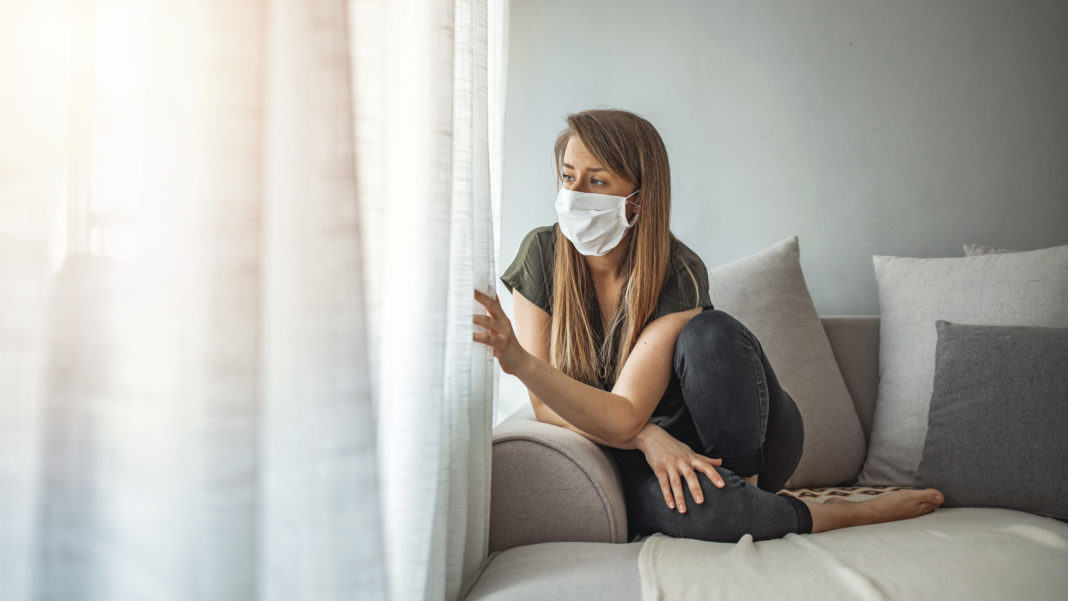W
hen the COVID-19 pandemic began, health authorities launched a monumental effort to educate society about the prevention strategies that needed to be adopted to reduce the risks of exposure and infections. Thus, we saw the world come to a standstill and increasingly grow more and more isolated in terms of our ability to interpersonally connect. Moreover, people started wearing masks, washing their hands frequently, and physical distancing became a requirement.

As the pandemic continued, there were major health challenges growing exponentially. As of today not only has COVID affected the physical integrity but the mental health of many individuals has deteriorated. This is evident as we observe an increase in affective disorders which influence the moods of those suffering from Anxiety and Depression. Even before the pandemic began, we must recognize that affective disorders, such as anxiety and depression, were the most common mental disorders in the United States. Since the pandemic, figures have increased along with social isolation and scarcity of resources, explained Dr. Tania Diaz, clinical psychologist and professor at Albizu University, Miami Campus.
“Since we are social beings, social isolation attributed by the pandemic presents a challenge. While mental health disorders have always existed, they have worsened now.”
As early as the summer of 2020, data from a survey conducted by the Centers for Disease Control showed 31% of the sample reported symptoms associated with depression and anxiety, and 13% had increased their substance and medication use. Even more alarming, 11% reported having suicidal thoughts. The data began to validate what experts had suspected: the pandemic had compounded mental health problems.
“We know that one in five individuals will experience some mental health disorder in their lifetime and this has not changed,” noted Dr. Diaz, who added that, since before the pandemic, roughly 10 million people in the United States suffered from some sort of mental health disorder. “Since we are social beings, social isolation attributed by the pandemic presents a challenge. While mental health disorders have always existed, they have worsened now,” she added, referring to how pre-existing symptoms have been exacerbated. Variables such as pre-existing conditions, substance abuse, and media saturation depicting the death toll of many Americans influence the mental stability of those struggling with affective disorders.
“Normalizing the individual’s experience is extremely important. There is a lot of stigmas associated with mental health.”
Considering our current situation, how can we help to make things better? What can we do to alleviate the burden of those struggling with mental illness? First, we can begin to change our approach to how we view mental health. “We must start talking about mental hygiene instead of mental illness. No one wants to be sick. So, we have to promote taking care of our mental health the same way we take care of our physical health, by focusing on prevention.” Mental hygiene refers to nothing more than the self-care we owe to ourselves, with simple actions such as tending to a well-balanced diet, having adequate rest time, knowing how to delegate and say no, having a support system, among other things.
“Some people have the ability to identify their stressors and manage them. However, individuals’ ability to do this is overshadowed by their anxiety and depression .” As such, how can we help our loved ones to overcome such struggles? More importantly, how can we identify early warning signs of mental health deterioration? One noticeable sign is when the person begins to act out of character. Thus, we can identify symptoms such as isolation, irritability, drowsiness due to lack of rest, changes in eating patterns, lack of concentration or memory, and difficulty in accomplishing tasks. The combination of these signs and the fact that they are atypical behaviors can give us an idea of the severity of the problem. “Each person is unique; hence, depression and anxiety can manifest themselves very differently from person to person.”
Another hurdle to overcome is social stigma. “Normalizing the individual’s experience is extremely important. There is a lot of stigmas associated with mental health,” added Dr. Diaz, who is faculty and Program Coordinator for Mental Health Counseling Program within the Master’s in Psychology Program at Albizu University, Miami Campus. To overcome this barrier, you can begin to have a conversation that will identify role models within the community that openly reported struggling with mental illness. The role models chosen should be associated with the person’s personal interests for example, “if the person is a sports fan, we can talk to them about the journey of Naomi Osaka and Michael Phelps. If you’re speaking to a younger person, we can use the example of Lady Gaga, or if it is someone a bit older, highlight the experiences of Bruce Springsteen. The idea is for the person to see that mental health struggles can happen to anyone.”
Doing so, we begin to build bridges of communication, minimizing stigma and creating a dialogue about mental health. We can also assist the person in the process of finding support and granting them access to resources. Other recommendations are to accompany the individual to their mental health appointment, assist as needed, and involve family and friends to develop a support system. “As I explain to my students, you have to be human first and therapists second,” Dr. Diaz said. “The more we practice mental hygiene, the more we will be able to move towards a more proactive, preventative, and social approach to mental health.”






























